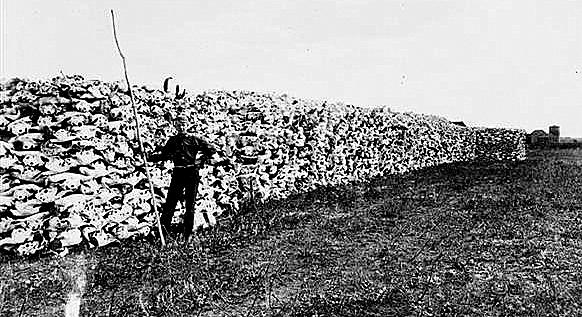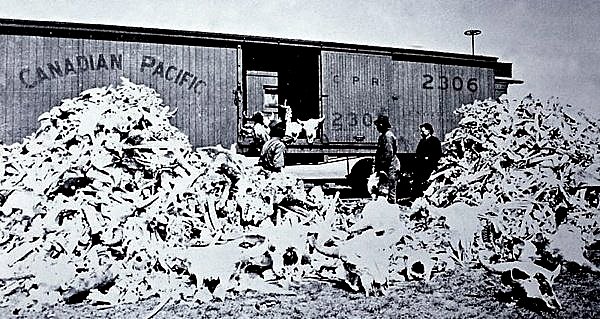Where the Buffaloes Roamed
Galloping buffalo, ca. 1883 (credit: Eadweard Muybridge)
When Lewis & Clark led their 1804 expedition, the Corps of Discovery, across lands acquired in the Louisiana Purchase, an estimated 60 million American bison (Bison bison) roamed the Great Plains. The shaggy beasts were the primary herbivore of that semi-arid landscape dominated by short, turf-building, grasses. They were a keystone species that affected the entire prairie ecosystem. By 1889, less than 700 of the animals remained, 500 or so in Canada and the remainder in Wyoming's Yellowstone National Park.
Removing this important apex grazing animal from the grass-covered prairies was both immediate, Native Americans relied on bison for food and materials and starved, and produced negative consequences for the ecological health of the plains environment. With the removal of the animals, conversion of the short-grass prairies into cultivated fields contributed to creating the situation that led to Dust Bowl catastrophe less than four decades later in many of the Plains States.


Bison bones and skulls being shipped to produce fertilizer ca. ~1890 (credit: Canadian archives)
In 1905, the American Bison Society was established by Theodore Roosevelt and others to help rescue the bison from extinction. In 1913, fourteen animals from the New York's Zoological Park, now the Bronx Zoo, were loaded on a train heading west to the Black Hills of South Dakota where they had once roamed free. The effort to repopulate herds of wild bison had begun. These efforts were one of the first attempts at wildlife restoration of an almost extinct species. Now, approximately 20,000 free-ranging bison roam again on the northern prairies and Native American tribal lands. Considerably more buffaloes are being raised on ranches where the meat is prized for both its quality, low fat, and flavor.
The success of bison restoration is a reminder of what can be accomplished with an endangered species given proper concern, will, and direct action. There certainly are no limits to the number of endangered wildlife that need help with being restored today. WHB